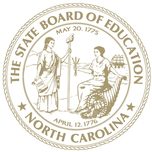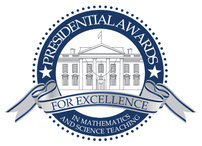
State Board Sets Policy Defining
Chronic Absenteeism
The State Board of Education gave final approval this month to a policy setting the state’s definition of “chronic absenteeism,” an issue that has been attracting increasing attention nationwide as a factor limiting student outcomes.
As adopted by the board, the state’s policy now defines chronic absenteeism in the state’s public and charter schools on this basis:
"Student Chronic Absentee” is a student who is enrolled in a North Carolina public school for at least 10 school days at any time during the school year, and whose total number of absences – excused or unexcused – is equal to or greater than 10 percent of the total number of days that such student has been enrolled at such school during such school year;
This definition applies to all students enrolled in a school, including those who have not reached the compulsory attendance age, as well as those who have reached or exceeded the compulsory attendance age.
Education research shows that chronic absenteeism is an effective and actionable measure. It serves as an early warning indicator for principals and other school staff to identify students who are at risk of adverse outcomes due to absences from school and intervene to reduce or eliminate absences. In addition, aggregate reports at school and district levels that measure the percentages of students chronically absent from school can help identify schools and districts that would benefit most from additional support and resources.
The board had been told by DPI staff during earlier discussions that a rate of chronic absenteeism of 10 percent is consistent with that of other states and is also supported by research and advocated by the national group Attendance Works.
Educators and researchers who argue for greater focus on the issue of chronic absenteeism say the first step for promoting consistent student school attendance and reducing student chronic absenteeism is collecting, analyzing and using accurate and consistent data. Schools are then able to identify at-risk students and trends and to inform when and how to effectively and efficiently target school and community resources.
Eight
outstanding public school principals have been selected as regional Wells Fargo
North Carolina Principals of the Year and will now compete for the state title
of 2018 Wells Fargo North Carolina Principal of the Year.
The winner will
succeed the 2017 recipient, Jason Griffin, principal of Hertford Grammar in
Perquimans County.
The regional
principals of the year are:
- Northeast: Cathy Michelle
White, D.F. Walker Elementary (Edenton-Chowan Public Schools)
- Southeast: Tabari Wallace, West
Craven High (Craven County Schools)
- North Central: Jonathan Enns,
Fuquay-Varina High (Wake County Public Schools)
- Sandhills: Jim Butler, Richmond Senior High (Richmond County
Schools)
- Piedmont-Triad: Tracy Kimmer, Yadkin
Early College (Yadkin County Schools)
- Southwest: Titus Hopper, Cleveland
Early College (Cleveland County Schools)
- Northwest: Desarae Kirkpatrick, Nebo
Elementary (McDowell County Schools)
- Western: Melissa Godfrey, Andrews
Elementary (Cherokee County Schools)
Regional winners
will each receive $1,000 for personal use and $1,000 for their schools.
A state
selection committee will now review the portfolios of the eight regional
winners and conduct an extensive interview process before selecting the 2018
Wells Fargo North Carolina Principal of the Year. The winner will be
announced May 11 at a celebration luncheon in Cary.
This is the 35th
year the North Carolina Department of Public Instruction has partnered with The
Wells Fargo Foundation to recognize the state’s outstanding principals. Since 1984,
when the program began, 38 Principals of the Year and 248 regional recipients
have been recognized. In addition, The Wells Fargo Foundation has provided more
than $1 million in cash awards during that time to these school leaders.
Three New Lab Schools to Open
Districts Partner with ASU, UNCG, UNCW
 The State Board
of Education approved three new lab schools to open this fall under the
management of campuses of the University of North Carolina. The three schools
will raise to five the number of such schools in the state.
-
Appalachian
State University is working with the Winston-Salem/Forsyth County Schools at Middle Fork Elementary School to develop the Appalachian State University
Academy at Middle Fork. The school will initially serve 315 students, growing
to 360, in grades K-5.
-
UNC
Greensboro is working with Rockingham County Schools at Moss Street Elementary
School to open Moss Street Partnership School, serving 450 students in grades
K-5.
-
UNC
Wilmington is working with New Hanover County Schools at D.C. Virgo Preparatory
to open a school with the same name, serving 270 students in grades K-8.
The mission of
the lab schools is three-fold: improve outcomes of K-8 students from
low-performing settings, strengthen teacher preparation and strengthen
principal preparation.
The first two
lab schools opened this year: ECU Laboratory School at South Greenville
Elementary in Pitt County, serving second through fourth grades, and Catamount
School at Smoky Mounty High School in Jackson County, operated by Western
Carolina University for students in sixth through eighth grades.
A total of nine
lab schools were authorized by the legislation directing their development and
to be open by 2019. Three other campuses are in discussions with local school
districts to open schools in the following year: UNC Pembroke, with the Public
Schools of Robeson County, UNC Charlotte, with Charlotte-Mecklenburg Schools
and N.C. Central University in the process of identifying a partner.
|
 In a wide-ranging discussion, the State Board of Education spent the first of their two-day February meeting deliberating strategic and budget priorities for the state’s public schools and for the Department of Public Instruction. The board considered how to respond to the Governor’s request for the Board’s priorities for expansion funding in 2018-19 and the possible impact of cuts to agency included in the state budget for 2018-19.
The board’s budget discussion followed a review of its strategic plan and the various indicators it uses to measure statewide education goals – from high school graduation rates and student test scores to the percentage of teachers rated as effective or highly effective. In the wake of last year’s $4.4 million legislated cut to the DPI budget, and with another $5.1 million set to be cut in 2018-19, board members expressed concern about the agency’s capacity to support schools in reaching goals for improved performance.
One million dollars of the 2018-19 legislated cut is associated with an operational review of the agency that is just getting underway. The timing of those cuts, which could be identified as early as spring 2018, also caused concern among board members.
Superintendent Mark Johnson said the operational review, whose findings are due to the General Assembly May 1, will look closely at the agency’s operations and needs, not necessarily just spending cuts.
“If they come in here and they say, ‘This department can not handle any more cuts,’ then that’s the answer,” Johnson told the board.
As part of its budget discussion, board members ranked their strategic goals in order of priority to help guide the request to the Governor’s office and the General Assembly for additional funding. Board members agreed on these priorities:
1. Excellent educators
2. Postsecondary preparedness
3. Educational equity for all students
4. Health, safety and responsibility of students
5. Personalized education
6. Financial and technological support for districts
The board will set its request for budget expansion items at its March meeting.
|
Nominations Open for National Math and Science Teaching Award
Teachers in K-6 Grades Are Eligible
 Nominations for the Presidential Award for Excellence in Mathematics and Science Teaching (PAEMST), the highest honor bestowed by the United States government specifically for K-12 mathematics and science (including computer science) teaching, is now accepting nominations.
Anyone — principals, teachers, parents, students, or members of the general public — may nominate exceptional mathematics or science teachers who are currently teaching grades K-6 for the 2017-2018 award year. Teachers may also apply directly at www.paemst.org.
The nomination deadline is April 1 and the application deadline is May 1 for elementary school teachers (grades K-6). Secondary school teachers (grades 7-12) will be eligible to apply during a future cycle.
|
|